One of the most important, yet often overlooked components to completion of a job successfully is the pre-pour meeting. If your concrete construction business has grown like so many over the last couple years, there is a good chance that you are bidding and taking on larger projects. Spending an hour prior to placing concrete can identify areas of concern and provide options if the job does not go as planned. Failure to conduct a meeting to plan ahead of a pour can result in lost time, re-work, injuries, and ultimately your reputation as a concrete contractor. These are the key components of pre-pour planning and a pre-pour meeting that will help to ensure a successful pour:
- Safety – The first topic discussed during every job-related meeting is safety. Clearly defined safety protocols are essential to ensuring a safe working environment for all stakeholders.
-
- Involve all trades and contractors that will be working on the jobsite during in the pre-pour meeting.
- Discuss the required personal protective equipment that will be needed by everyone on the jobsite.
- Take attendance and know who is on the construction site.
- Clearly define roles and responsibilities.
- Grade –Defining grade is vital to delivering a quality product.
-
- It is extremely important to have a fixed and defined benchmark for setting grade on the project.
- Make sure the benchmark is clearly marked and everyone is aware that this will be the point all lasers are set from.
- It is also a good idea to know the tolerance for the rough grade and the fine grade on the project.
- Make sure that you have laser equipment that is calibrated and in good working condition in order to achieve the desired tolerances.
- Be prepared to check and then check again. Do the same once the grade is transferred to the Ligchine™ screed machine.
- Concrete Placement – Discussing the plan for placement of concrete ahead of the redi-mix trucks showing up will alleviate confusion and stress from the jobsite.
-
- Look at the jobsite for access points, how will the trucks enter, washout and exit the site in a safe manner.
- Will the placement method be tailgated, pumped or by conveyor?
- How will you set the equipment to ensure you do not have to move multiple times causing disruptions to concrete placement?
- If using a Ligchine™ screed, what is the best direction to travel to fully utilize machine?
- How many yards an hour can the redi-mix company deliver and is there sufficient equipment on site to handle the pace?
- Do you have a contingency plan if there is a significant disruption to redi-mix service, like lumber for a bulkhead?
- Equipment Needs – Having a list of needed equipment to complete job before arriving on the jobsite will save time and confusion at the onset of the concrete pour.
-
- If starting the pour in the dark, will you have adequate lighting to ensure the safety of everyone on site?
- What will your strike off/screed method be, do you have someone designated to operate that piece of equipment?
- Do you have enough power trowel machines on the job, especially if weather conditions increase or decrease the set time of the concrete?
- Will a forklift or skid steer be needed to move equipment from the staging area to the slab and does that equipment have the adequate lifting capacity to safely do this?
- Do you have a piece of equipment on the job that can fix the subgrade if it should become disturbed by trucks or equipment driving on it?
- Finally, do you have back up equipment in the case of a breakdown or failure?
- Testing – Discuss who is going to be testing the redi-mix as it is delivered, as well as who will own responsibility for making adjustments if any are needed.
-
- It is also good determine how often testing should occur throughout the placement to ensure consistency and quality.
- Discuss what needs to be tested and the acceptable method to carry out the test. The rate of placement can impact testing and should be considered into the plan as well.
- Understand the required finish on the completed slab and make sure to have the tools necessary on the job to achieve that finish.
- If FF/FL specifications are required on the project, make sure to understand the competency level of the labor required along with the equipment needed to achieve the minimum specifications.
- Saw Cutting and Curing – Saw cutting and curing are extremely important to the long term durability of the concrete slab.
-
- Determine the method for saw cutting contraction joints into the completed slab.
- The timing will be determined by the method used.
- Talk about who will be responsible for laying out the joint pattern prior to sawing activities.
- The joint layout will have long term effects on the reliability and serviceability of the slab and should be done by an experienced individual.
- What materials will be used for curing the slab?
- If using chemicals discuss the application rate and method.
- If wet curing, discuss the length of time that is sufficient.
- Curing blankets and a clean water source that is neutral in pH may be required.




